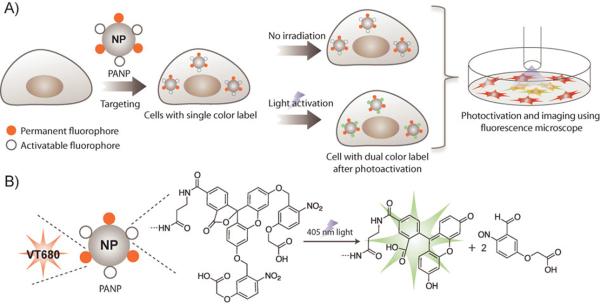Scheme 1.

Schematic showing the spatiotemporally-controlled dual-color optical labeling strategy using photoactivable nanoprobe (PANP) targeted to a specific cell type. A) VT680 and `caged' fluorescein-conjugated PANP was used to label cells of interest (e.g. phagocytic macrophages or human epithelial carcinoma A431 cells). All labeled cells were visible at 680 nm. Dual-color labeling of cells was achieved with high spatial and temporal resolution following their activation with 405 nm laser light. Light exposure to a selected population of cells lead to activation of fluorescein fluorescence, and thus dual-color (VT680 and fluorescein) labeling of cells. Activation of cells and corresponding real-time imaging was achieved using confocal laser scanning microscopy (CLSM). B) The chemical structure of PANP and its photocleavage reaction under 405 nm light. The photolytic reaction removes the two o-nitrobenzyl caging groups, which leads to activation of fluorescein fluorescence.
